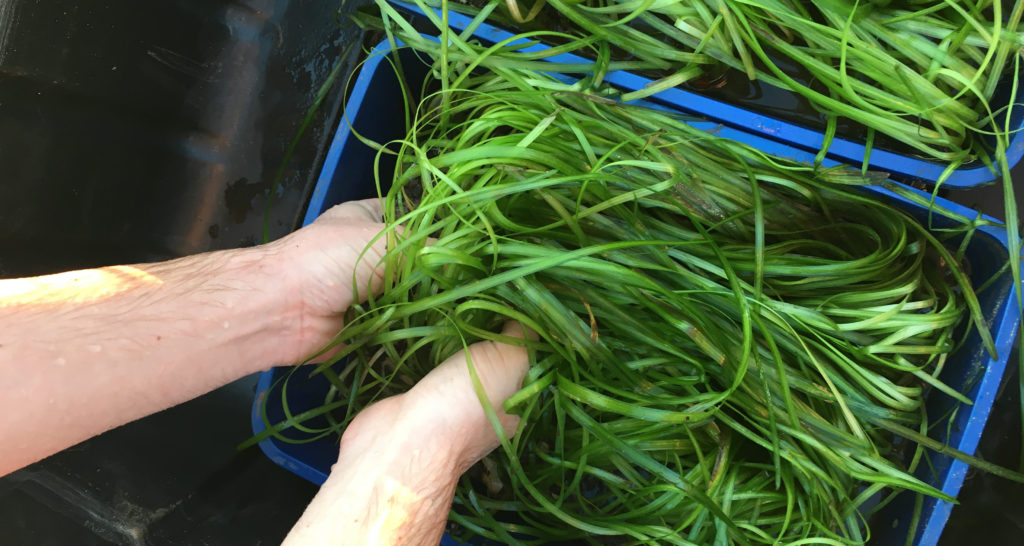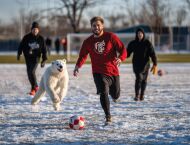Eat
 Photo: Courtesy of Lani Furbank
Photo: Courtesy of Lani Furbank
Growing Grasses for the Masses
March 30, 2019 @ 12:00am
I grow grass – but not the kind you’d think. It’s called Vallisneria Americana, and this green stuff has an entirely different purpose. This particular species of grass, commonly known as wild celery, proliferated on the bottom of local rivers in the Chesapeake Bay watershed centuries ago. Today, less than half of the underwater grass population remains.
This is a serious concern for ecologists, but also for anyone who enjoys Chesapeake blue crab and the bounty of seafood that comes from the bay. Underwater grasses are essential to the health of the bay ecosystem for a number of reasons: they reduce erosion, combat pollution, produce oxygen, and provide critical habitat for fish and shellfish.
That’s why I’m one of hundreds of volunteers in Virginia who grow wild celery in their homes, classrooms and offices each year with the goal of restoring the lost acres of grass beds in the bay watershed. Our efforts are part of an initiative run by the Chesapeake Bay Foundation (CBF) called Grasses for the Masses. It started in 2000 and since then, more than 2,750 people have served as grass caretakers.
As a clean water captain and regional coordinator for CBF and the grasses program, I help educate interested individuals about the process, which takes five months from planting seeds to transplanting grasses in local rivers. Each year in January and February, volunteers receive kits to set up growth tanks equipped with lighting, heaters and water pumps. Then, they plant seeds provided by CBF and watch and wait as those seeds germinate and grow into plugs, eventually turning into lush beds of grass.
After 10 to 12 weeks of growth and careful monitoring, the grasses are ready to make their way to their new home in the bay’s tributaries. In Northern Virginia, volunteers head to Mason Neck State Park in Lorton to transplant their charges into the Potomac River.
The program has seen great success over the years, but the impact isn’t limited to just planting new grass beds within designated areas of local rivers. The thousands of grass plugs planted by volunteers over the years produce hundreds of thousands of seeds that will serve as a seed bank to help boost populations across the watershed.
Thanks to restoration efforts like this, as well as significant water quality improvements in recent years, aquatic grasses are making a comeback. The 2017 survey by the Virginia Institute of Marine Science mapped the highest acreage of underwater grasses since data collection began in 1978. It also marked the third consecutive year that grasses increased bay-wide.
There’s still a long way to go to, but thanks to volunteers growing grass, I have high hopes.
If you’re interested in participating in the program, visit www.cbf.org/join-us/volunteer and fill out the form to volunteer in Virginia. Select “Underwater Grasses Restoration” as a volunteer interest in order to stay in the loop about next year’s workshops. You can also reach out to grassroots coordinator Gabby Troutman at [email protected].







